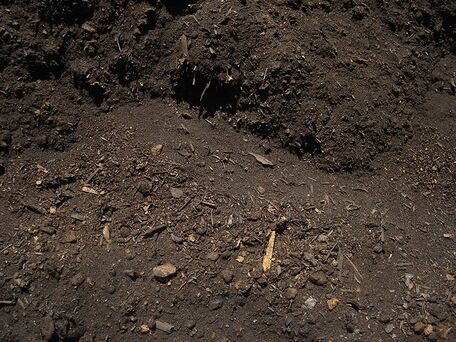Humus
Humus is the dark organic matter that forms in soil when dead plant and animal matter breaks down further specifically through the action of anaerobic organisms. Humus is amorphous and without the cellular structure characteristic of plants, micro-organisms or animals. Humus has a large amount of nutrients and a high carbon content. It can be distinguished from the litter layer due to its homogenic character.
Characteristics
Humus consists of about 60 percent carbon, 6 percent nitrogen, and smaller amounts of phosphorus and sulphur. As humus decomposes further its components are used by plants, making the circle complete. Humus is organic matter undergoing a process of decay where peat is really pickled organic matter, in which decay is nihil. The characterisation of humus is very difficult, because of the complexity of the substance. The latter looks rough and has visible remains of the original plant or animal matter, which does not count for fully humified humus. In the last case the only indication for plant or animal matter can be discovered by a microscope.
Types
Humus is classified into mor, mull, or moder formations according to the degree of its incorporation into the mineral soil, the types of organisms involved in its decomposition, and the vegetation from which it is derived.[1]
Mor-humus
A mor-humus formation, or raw humus condition, occurs in soil that has few micro- organisms or animals, such as earthworms, to decompose the organic matter that lies on the soil surface. Below this surface-litter layer is a distinct, strongly compacted humus layer; a layer of mineral soil underlies the humus. Fungi and small arthropods are the most common organisms. Mor soils are usually acidic (low pH) and are characteristic of coniferous forest areas, especially in cold regions and at high altitudes.
Mull-humus
A mull-humus formation is characteristic of hardwood forests, deciduous forests, or grasslands in warm, humid climates. The porous, crumbly humus rapidly decomposes and becomes well mixed into the mineral soil, so that distinct layers are not apparent. Bacteria, earthworms, and larger insects are abundant, and the pH is high.
Moder-humus
A moder-humus formation is intermediate between mor and mull extremes. Moder is sometimes known as insect mull because its distinguishing characteristic is the presence of many arthropod fecal pellets. Chains of these pellets bind plant debris and mineral particles together into a netlike structure. A moder formation contains more organic material than a mull formation, but this material is not as well mixed with mineral components.
